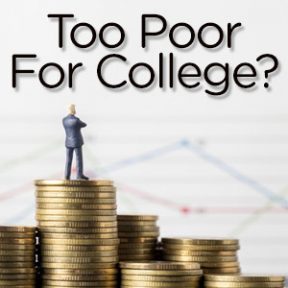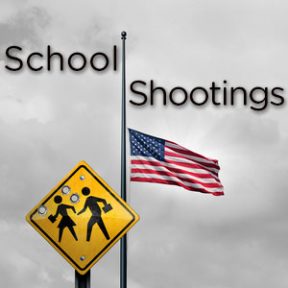 Does the nuclear family have to die for civilization to prosper?
Does the nuclear family have to die for civilization to prosper?
Growing up in the 60’s and 70’s, we revolutionized how we worked, whom we married, and how we raised our children. We didn’t copy our parents – instead, we reinvented the “nuclear family” as we chased big money, questioned every parenting guru, and became super-moms and super-people. Even before the computer, internet, and virtual meetings, we jet-setted across that nation and took pride in our independence – and success.
This actually goes back to the Industrial Revolution where we automated everything from agriculture to transportation. Bigger and faster became the motto. We drove gas guzzlers because petroleum was cheap and abundant. And we looked down on people who were afraid of technological advances. It was the demise of extended families as their children set off to chase get-rich schemes, and these new nuclear families used their education and resources to bridge the gaps that their families used to fill.
Now the sandwich generation is raising their babies while caring for their elderly parents in a very different world. It’s not the 80’s when you could buy a house and make a 100% return in less than a year. Millennials don’t have pensions and probably won’t have social security benefits by the time they retire. So raising children and paying $1,000+ per month for childcare and education without family support is a rude awakening for this new generation of families. Then paying $6,000 per month for eldercare for each parent, is just about impossible for most Americans. Baby Boomers are retiring and with great medical care, they’re living much longer than their parents.
I’m hearing 20-somethings and 30-somethings talk about bringing back the extended family again. The conversation usually starts when the real numbers hit them. All of a sudden, having aunts and uncles, grandparents and even great grandparents nearby makes sense when they need help with child care, transportation, and meal prep. Family dinners and gathering make a socially healthy environment to raise children and it takes off the tremendous burden of being a supermom who brings home the bacon, cooks it, cleans up, bathes the kids, runs errands, pays the bills and reads stories every night. Sound familiar?
The nuclear family, like the Industrial Revolution, had its place in society. We kept improving technology and expanding our reach until we over consumed causing climate change, social injustice, and now family dynamics that are neither healthy nor sustainable. It reminds me of a quote, “Just because we can doesn’t mean we should, and just because we should doesn’t mean we can.”
It’s time to look at the big picture. Let’s get back to spending time with loved ones and living a more sustainable lifestyle.



 Smoked salmon, or any kind of fresh wild salmon, is my favorite food. Unlike the farm raised or genetically-engineered salmon that is sold in most grocery stores and fish markets, wild salmon meat is firm – not soggy – and flavorful. Unfortunately, food scientists continue to mess with nature by genetically engineering a super salmon comprised of Atlantic salmon (farm raised), deep-water ocean eelpout, and Pacific Chinook salmon.
Smoked salmon, or any kind of fresh wild salmon, is my favorite food. Unlike the farm raised or genetically-engineered salmon that is sold in most grocery stores and fish markets, wild salmon meat is firm – not soggy – and flavorful. Unfortunately, food scientists continue to mess with nature by genetically engineering a super salmon comprised of Atlantic salmon (farm raised), deep-water ocean eelpout, and Pacific Chinook salmon. 
 When I was a college student, anyone could pay for their own college education with a summer job and a Pell Grant (or scholarship). Back then, Pell Grants covered almost 80% of the tuition. Today, Pells only cover about 18%.
When I was a college student, anyone could pay for their own college education with a summer job and a Pell Grant (or scholarship). Back then, Pell Grants covered almost 80% of the tuition. Today, Pells only cover about 18%. 
 As an educator, I see school shootings differently than the polarizing NRA vs Mental Health advocates. I work one-on-one with teens every day. I hear about their studies, their families, their friends, and their fears. They’re inundated with information. Receiving over 100 texts per day, they don’t have the bandwidth to engage in conversations, dig deeper to learn more, or reach out to friends/family who need them. Our teens are lonely. Yes, technology interferes with healthy, and much needed, human-to-human interaction.
As an educator, I see school shootings differently than the polarizing NRA vs Mental Health advocates. I work one-on-one with teens every day. I hear about their studies, their families, their friends, and their fears. They’re inundated with information. Receiving over 100 texts per day, they don’t have the bandwidth to engage in conversations, dig deeper to learn more, or reach out to friends/family who need them. Our teens are lonely. Yes, technology interferes with healthy, and much needed, human-to-human interaction.
 I remember when my grandmother used to let her beans “go to seed” and dried them in a cool, dry place until the following season. She had the best vegetables. Her green beans were sweet and crisp. Her tomatoes were flavorful.
I remember when my grandmother used to let her beans “go to seed” and dried them in a cool, dry place until the following season. She had the best vegetables. Her green beans were sweet and crisp. Her tomatoes were flavorful. 
 Considering getting an MBA? Think again. Many full-time MBA programs are changing the direction of their programs, and MBA grads are giving these programs low rankings. Although the international MBA programs are continuing at major universities, domestic programs are scaling back their executive MBA and MBA markets because of these 3 reasons: (1) employers are reluctant to pay higher salaries; (2) many MBA programs offer online courses; and (3) grad students are losing interest in the MBA programs. Wake Forest, Virginia Tech, and Simmons College have closed their MBA programs and that seems to be a new trend, but full-time MBA programs at the most elite colleges will continue.
Considering getting an MBA? Think again. Many full-time MBA programs are changing the direction of their programs, and MBA grads are giving these programs low rankings. Although the international MBA programs are continuing at major universities, domestic programs are scaling back their executive MBA and MBA markets because of these 3 reasons: (1) employers are reluctant to pay higher salaries; (2) many MBA programs offer online courses; and (3) grad students are losing interest in the MBA programs. Wake Forest, Virginia Tech, and Simmons College have closed their MBA programs and that seems to be a new trend, but full-time MBA programs at the most elite colleges will continue.
 While May 1st WAS the deadline for most private and selective public colleges, there are plenty of colleges still recruiting students for Fall 2018. Only 36% of the thousands of colleges in the US have filled their incoming classes by May 1st. Yup. So BREATHE.
While May 1st WAS the deadline for most private and selective public colleges, there are plenty of colleges still recruiting students for Fall 2018. Only 36% of the thousands of colleges in the US have filled their incoming classes by May 1st. Yup. So BREATHE.
 I get annoyed when people respond to smartphone texts and calls while I’m talking to them. Call me old school, but it sends me the message that whatever or whomever is tugging at that person is far more important than me. It could even be a wrong number – and our conversation was awkwardly disrupted. But when parents pay for their children to work with me and their children still check their phones (even when it’s on vibrate!) during our meetings, I find that downright disrespectful!
I get annoyed when people respond to smartphone texts and calls while I’m talking to them. Call me old school, but it sends me the message that whatever or whomever is tugging at that person is far more important than me. It could even be a wrong number – and our conversation was awkwardly disrupted. But when parents pay for their children to work with me and their children still check their phones (even when it’s on vibrate!) during our meetings, I find that downright disrespectful!
 When high school students at public schools in wealthy areas have access to better classes and better college advising than others, we are increasing our divide between the haves and the have nots. Some public school students have engineering, robotics, speech and debate, over 20 AP courses, and excellent introduction to high-paying careers in STEM, while students from inner city ghettos don’t have basics like AP classes, honors courses, and the breadth of courses that selective colleges require for eligibility to attend.
When high school students at public schools in wealthy areas have access to better classes and better college advising than others, we are increasing our divide between the haves and the have nots. Some public school students have engineering, robotics, speech and debate, over 20 AP courses, and excellent introduction to high-paying careers in STEM, while students from inner city ghettos don’t have basics like AP classes, honors courses, and the breadth of courses that selective colleges require for eligibility to attend. In August, Merit Academy hosted TEDxMeritAcademy at the Rio Theatre in Santa Cruz.
In August, Merit Academy hosted TEDxMeritAcademy at the Rio Theatre in Santa Cruz.